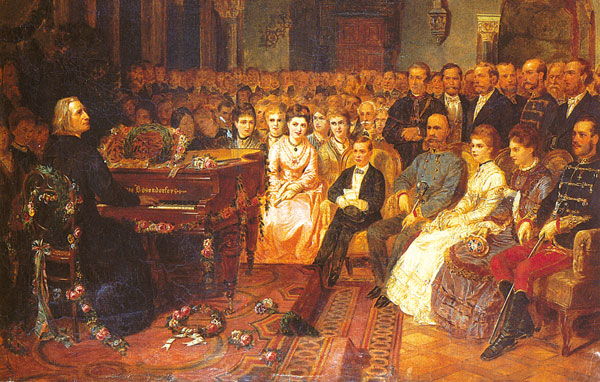By the end of the semester, though, I found I had gotten much more than an A out of the course. It had opened my eyes, or ears I should say, to music from composers and times that I had not before appreciated.
In one unit, we listened to samples of Gregorian chants that were sung in Medieval churches. I was fascinated by the harmonies and stirring melodies, and I wasn't the only one.
 |
| Franz Liszt playing for an audience |
Franz Liszt completed Totentanz: Paraphrase on Dies Irae in 1849. It is a piece for solo piano and orchestra that takes the themes from one of the most haunting melodies from the Gregorian Era and develops it into an amazingly textured creation.
Liszt was a rock star of his time, and romanticizing the slightly grotesque and macabre was the thing to do. In his piece, the simple theme is repeated over and over, swirling across different instruments, octaves, and modes.
This piece has since been on my playlist and I listen to it often. No matter my current emotion, it always seems to satisfy. There are strong booming chords that release any anger in my system. There are fluttering, light moments that feel bouncy and pleasant. There are smooth melodies for contemplative peace and glorious finales for when I am feeling like a conqueror.
Every single listen takes me on that emotional ride and by the time it is finished I feel full and accomplished, and Dies Irae, "The Day of Wrath" is ingrained in my mind.
Image Credit: Wikipedia Commons

There truly is something about the exploration of emotion in music that will never cease to amaze me. It has the power to completely turn your emotions upside down but make you feel more in control at the same time.
ReplyDelete